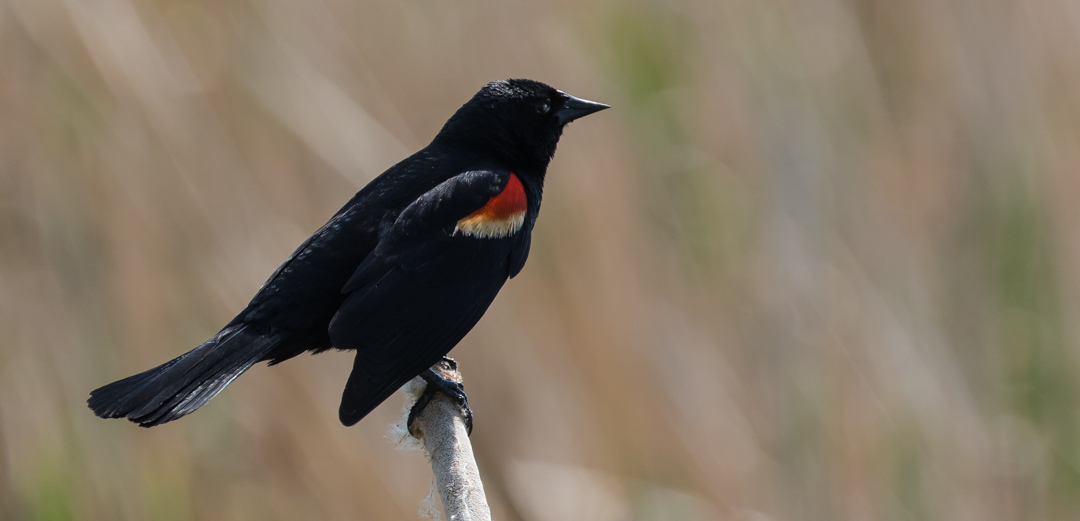Cross Canada Chronicles – II
The Delta Marshes
June 6: If you thought the prairies were nothing but, well, prairie, think again. Manitoba has a couple of large lakes, one of which, Lake Manitoba, has extensive marshlands on the south end, a magnet for birds of all kinds.
On this hot, sunny June day, I spent the afternoon at the Delta marshes. I was a little late for the spring migrations—the delta is a major staging area— but there was still plenty of action.

Common Terns: Aerial Acrobats
Dozens of these striking birds were out on their daily hunt as I approached the marsh. These birds, fast, acrobatic and endlessly fascinating, will flit back and forth high in the air until they spot their prey in the water, then hover like a helicopter, giving a distinctive chatter before plunging straight down to swoop fish out of the water.
Although incredibly fast, they have a graceful choreography in flight. I’ve included several shots here to try to demonstrate this. Notice the beak pointing straight down as the bird locks on to the prey’s position.
 (Searching)
(Searching)
 (Spotting)
(Spotting)
 (Plunging)
(Plunging)
 Juveniles are easy to spot as the head and beak colouring
Juveniles are easy to spot as the head and beak colouring
has not yet matured.

The grace, form, line and movement in the shape of this bird
is nothing short of calligraphic
Fake News

Eager to reach open water at the marsh, I was carrying my photo equipment down a gravel path—the only path—through the wetland out to the lake. About half way down the way, I noticed a small killdeer. It came up quite close to me, and then began behaving oddly. Instead of skittering around and keeping its distance, as killdeers normally do, this one began flopping on the ground, one wing looking oddly out of place, as if it were broken.
Killdeers are masters of deception. At this time of year, their nests, lying completely open on the ground, are more vulnerable than most to predators. But our killdeer here has a few tricks up her sleeve to help even the odds. To begin with, her eggs are well camouflaged to look like rough stones. Indeed, totally oblivious, I had passed within less than a meter of the nest, completely unaware it was even there.

Once mother killdeer thinks that her nest is in danger of being discovered, she begins to feign a wing injury in an attempt to lure would be predators, hopeful of the easy pickings of an injured bird, away from her nest. And that’s exactly what our little killdeer was doing here. Once danger has passed, the killdeer miraculously ‘recovers’, and returns to her nest.

I was able to quickly photograph, and get a few video shots of the behaviour. (Note that the photo of the nest was taken with a telephoto lens. Once I had realized how close I had been, and saw how the bird was reacting, I removed myself from the area.)

Killdeer Deception: the video
Other birds of the marsh
Here are a few of the many other birds spotted at the marsh:

Yellow-headed blackbird

Yellow-headed blackbird being territorial

Cliff Swallow

Red-winged blackbird – male

Red-winged blackbird – female

Canada Goose and her not-so-small-anymore goslings

Robin

Not sure if you already received this, but the pictures were magnifent loved the story of he killdeer. Keep,them coming-you are good! X cousin Barb
Thanks, Barb! Glad you’re enjoying!
Hey John, I spent four years flying out of Portage la Prairie, right near where you are, but seeing it through your perspective makes me realize how much more there is to nature that most of us fail to grasp. Great memories, looking forward to more of the same.
I hadn’t realized this was your old stomping grounds! Today I’m over in Saskatchewan.
When a top cameraman and good story teller discover a lead actor! I can imagine your excitement John when you realized what the killdeer mother was up to.
Thanks, Nicole!
yeah, another trip of JD’s to follow. amazing photo as always!
Thank you Dorothy. A magnificent country we have here!
I remember seeing my first yellow-headed blackbird on my first trip west at 21 or so. I knew I was somewhere else. Measuring travel in birds!
incredible.
Great planet we landed on, yes?
Hi, John,
I’ve forwarded your last two e-mails / blogs to my parents, siblings, daughters. You have a fan base in Ottawa, Nova Scotia and the UK!
We look forward to each installment of your journey
Thanks, David. Glad they’re all enjoying!
Thanks David. Glad you’re enjoying.
Great pics and storytelling JD! Wishing you continued fascination!
Keep ’em coming.
Thanks Louis!
Spectacular! Again and again.
Thank you, Truus! Good to hear from you!
The Prairies…so many hidden treasures if you care to look. Thanks for looking on our behalf 🙂
jd….are you coming to bc….?
– Great pictures and stories John
– Please keep them coming !
Qi and Light John F.
Thanks for the journey. A delight to tavel wit you and see through your lens
Thanks Mahabir. Great to hear from you!
Another great blog, John. Love these pictures, and your narration.
Thanks Jane, Getting ready to post the next one 🙂
You’re photos are beautiful, thanks for sharing.
Gorgeous pics JD! I love the video of the Killdeer – great capture.